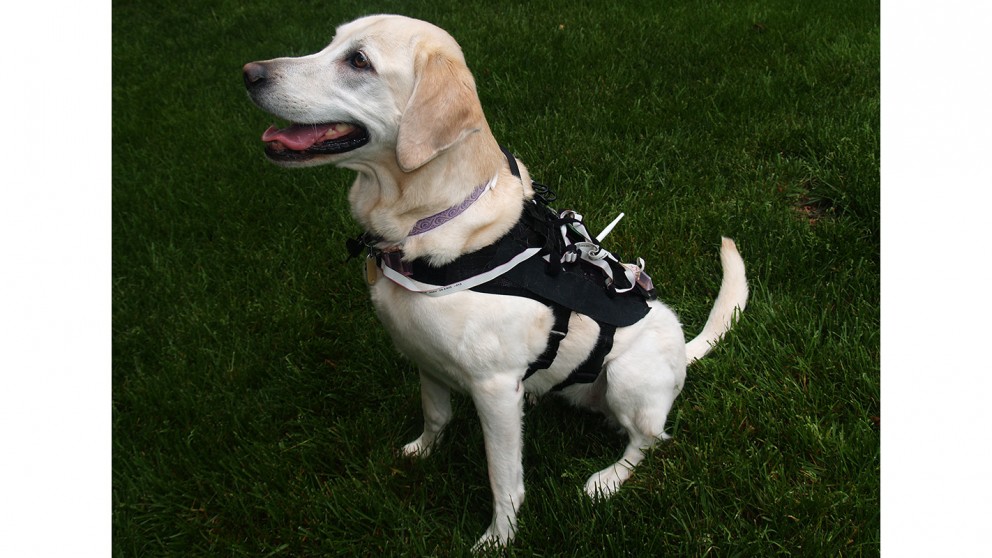Dog-training can be a tedious task. That’s why researchers from North Carolina State University have put a high-tech spin on the act. The team has figured out a way to let a computer take over the job of training dogs.
The researchers developed and used a customized suite of technologies that allows a computer to train a dog autonomously by using sensors in the dog’s collar. The computer will even effectively respond to the dog based on its body language.

“Our approach can be used to train dogs efficiently and effectively,” said David Roberts, an assistant professor of computer science at NC State. “We use sensors in custom dog harnesses to monitor a dog’s posture, and the computer reinforces the correct behavior quickly and with near-perfect consistency.”
The NC State team envisions the technology being used to train dogs more quickly, for example, in the case of service dogs.
“Ultimately, we think the technology will be used in conjunction with human-directed training,” said Alper Bozkurt, an assistant professor of electrical and computer engineering and co-author of the paper.
The dog harness is equipped with various monitoring technologies that track the dog’s posture and body language. Each harness incorporates a computer the size of a deck of cards that transmits the sensor data wirelessly.
To work in conjunction with the collar for dog-training purposes, the researchers wrote an algorithm that triggered a beeping sound and the release of dog treats from a nearby dispenser whenever the dog’s harness sensors detected that the dog went from standing to sitting.
Of course humans were present to ensure that the reinforcement was given shortly after the desired task was completed, as well as to make sure the rewards were only given for the correct posture.
The algorithm wasn’t perfect, though. If it ran long enough to ensure the correct posture with 100% certainty, the treats were given too late to be effective, but if the reinforcement was given immediately, there was a high likelihood of rewarding the wrong posture.
To overcome this, the researchers worked with 16 volunteers and their dogs to find the best possible combination of speed and accuracy. They then compared the algorithm’s timing and accuracy to that of an expert human trainer.
The algorithm was found to be highly accurate, rewarding the appropriate behavior 96% of the time. However, humans are still better at training at the moment – with a 100% accuracy rate.
The team did find that the algorithm was consistent, though, which is known to be a critical factor in animal training.
“This study was a proof of concept, and demonstrates that this approach works,” said Bozkurt. “Next steps include teaching dogs to perform specific behaviors on cue, and integrating computer-assisted training and human-directed training for use in various service dog applications.”
As for a long term goal, the team wants to implement the approach into animal-computer interaction and figure out a way to get dogs to use computers.
“For example, allowing an explosive detection dog to safely and clearly mark when it detects components of a bomb, or allowing diabetic alert dogs to use their physical posture and behaviors to call for help,” said Roberts.
Story via NC State.


Comments are closed, but trackbacks and pingbacks are open.